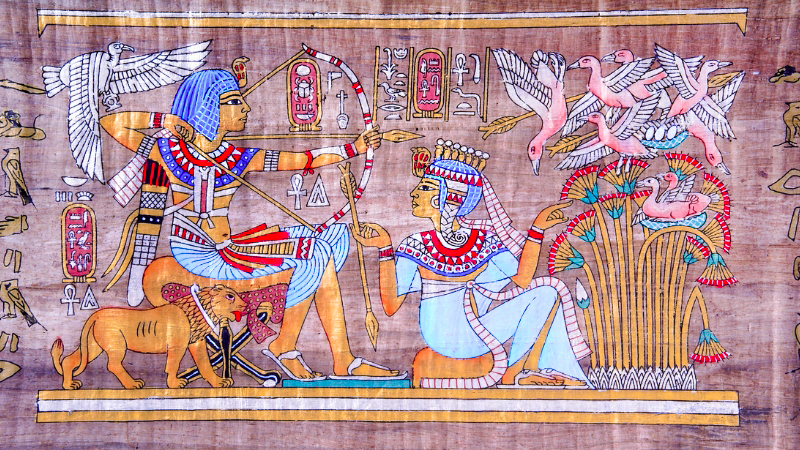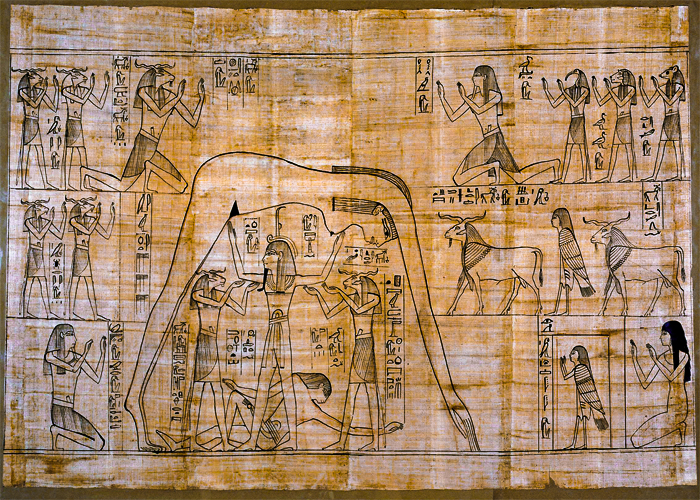Egyptian Mythology Creation Story is one of the most enduring mysteries in human history, and it’s a subject that many different cultures have explored over time. In Ancient Egypt, there was no single creation myth but rather several other stories. The Egyptians believed three gods helped create the world: Atum-Ra, Shu, and Tefnut. Atum-Ra was known for making everything from nothing but his semen and masturbating.
The Egyptian Mythology Creation Story of Ancient Egypt
Egyptian mythology is a collection of ancient Egyptian beliefs about the gods, goddesses, and mythological creatures. Ancient Egypt’s creation story is about how they created the world from nothingness.
The story begins with Ra alone in Nun (the primordial waters). He wanted to create something, so he spoke words that made light appear and then used his voice to create Shu (air) and Tefnut (moisture). These two became husband and wife and had four children: Osiris, Isis, Set, and Nephthys. Ra named these five gods “The Ennead.”
Don’t miss to Read More about What to see in Cairo: The best things to see in Cairo.
The Role of Gods and Goddesses in the Creation Story

Gods and goddesses were important in Egyptian mythology. The gods created and maintained the world, humans, and their afterlife. They also controlled the weather and other aspects of daily life.
The most crucial god or goddess was Ra, the sun god who ruled over Creation by setting off into his boat each morning then returning at nightfall to start it all over again (and thus earning him titles like “he who shines forth from his horizon” or “he who traverses millions of years in one day”). He’s often portrayed with his head bent forward because he’s too tall for humans to look directly at him without being blinded! Other deities include Isis (who helped Osiris resurrect after he was murdered); Horus (who avenged his father); Thoth (who wrote down everything that happened on Earth); Bastet (who protected cats); Sekhmet (a lioness goddess associated with war); Anubis (who guarded graves); Ptah-Sekeriun-Ra (the creator god).
Things To Do In Luxor: Top Luxor Attractions & Luxor Hot Air Balloon Ride Tour at Sunrise
The Creation of the world and the first Gods

After Ra had created the world, he made his children. These first gods were Shu and Tefnut, Geb and Nut, and Osiris and Isis. These gods created the first humans: Ra’s children gave birth to them on Earth. The pharaohs were also descended from these first humans; they ruled Egypt for thousands of years before the arrival of Greek invaders in 27 BC (which is when our current calendar begins).
The Creation of humans and the afterlife
The Egyptians believed the afterlife was a continuation of life on Earth, not reserved for only wealthy individuals. Many people could expect to be rewarded or punished hereafter based on their actions while alive. The souls of those who had led good lives would go to heaven, while others would suffer torment in hell.
The Creation begins with Atum, an early god who created himself out of nothingness by masturbating (yes!). From this act came Shu (air) and Tefnut (moisture), who then gave birth to Geb (earth Nut (sky). These four beings became known as The Ennead: nine gods who ruled over everything in ancient Egyptian mythology–including humans’ Creation!
The significance of the creation story in Egyptian culture

The Egyptian creation story was a significant part of Egyptian culture and mythology. They used it to explain the world and its origins and provide answers about what happened after death. The story begins with Nun, an oceanic deity representing chaos and darkness. He is paired with Atum, another god associated with light, which creates Ra–the sun god–from his own body to defeat Nun’s forces of darkness.
How the Creation Story influenced art and architecture
The creation story was used in art, architecture, and literature. The Egyptians were interested in the universe around them and how it came to be. They believed the gods created everything on Earth and used this idea to inspire their art.
The creation story influenced the way Egyptians built their temples
The temple of Djoser at Saqqara was constructed during this period (2630-2611 BCE). It shows us what an Egyptian temple looked like back then; it had a pyramid shape with stairs leading up to its entrance gate.
The legacy of Egyptian mythology in modern times
The legacy of Egyptian mythology in modern times is an important one. As seen from the Sphinx at Giza, the creation story still influences art and architecture, built to honor the god Khafra (or Chephren). Even though the ancient Egyptians believed in their gods and goddesses with all their hearts, these beliefs have not kept them from being studied by scholars today.
Egyptian mythology has also had an impact on modern culture: many films have been made based on stories from or influenced by ancient Egyptian texts like The Book of Dead; many books have been written about how modern society reflects old Egyptian beliefs; and even songs have been written about how they feel like some of their lyrics were inspired by ancient Egyptian writings!
Conclusion
Egyptian mythology is an integral part of the culture of ancient Egypt, and it has been influential in other cultures as well, particularly in religion and spirituality. The creation story is one example of this influence: it has been adopted by multiple religions and cultures over time, such as Judaism, Christianity, and Islam. The Egyptian creation myth tells how Atum created himself out of nothingness before creating Shu (air) and Tefnut (moisture). These two deities then gave birth to Geb (Earth) and Nut (sky), who became husband and wife – although it was said that they never touched each other because doing so would cause them great pain! With these four entities came all things else: animals, plants, humans… even death itself!
We hope that you enjoyed learning about the creation story of Ancient Egypt. It’s a fascinating topic with many different layers, from the role of the gods and goddesses in this story to how it influenced art and architecture. If you want to learn more about Egyptian mythology, we recommend starting with other articles on this topic!




